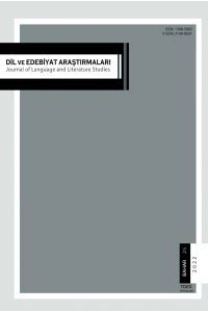Applying Gilly Salmon’s Five Stage Model For Designing Blended Courses
The article gives etymology of a contemporary term ‘blended learning’ and a reasonable
insight into the understanding of G. Salmon’s five-stage framework, and
provides in-depth analysis of applying all the phases of the model for
designing blended courses. The functions, principles and prerequisites of each
stage which are to be followed while implementing to design courses are
presented thoroughly within the example of a short-term blended course. The
core aim of this framework is to develop and promote a mixture of active online
and approachable traditional learning atmosphere which is one of the prominent
tasks required from course designers. The course created in the framework of
G.Salmon is piloted at one of the higher educational establishments, and the
subjects are the students of MA programme. Moreover, the final evaluation which
consists of two parts is rendered by the subjects of the study after the
approbation of the current short course. It precisely elucidates and verifies
the efficacious and active integration of blended learning to prepare future
prosperous language teachers.
Anahtar Kelimeler:
blended learning; face-to-face learning; online learning; course design; blended course.
Gilly Salmon'un Beş Aşamalı Modelinin Karma Derslerin Tasarımına Uygulanması
The article gives etymology of a contemporary term ‘blended learning’ and a reasonable
insight into the understanding of G. Salmon’s five-stage framework, and
provides in-depth analysis of applying all the phases of the model for
designing blended courses. The functions, principles and prerequisites of each
stage which are to be followed while implementing to design courses are
presented thoroughly within the example of a short-term blended course. The
core aim of this framework is to develop and promote a mixture of active online
and approachable traditional learning atmosphere which is one of the prominent
tasks required from course designers. The course created in the framework of
G.Salmon is piloted at one of the higher educational establishments, and the
subjects are the students of MA programme. Moreover, the final evaluation which
consists of two parts is rendered by the subjects of the study after the
approbation of the current short course. It precisely elucidates and verifies
the efficacious and active integration of blended learning to prepare future
prosperous language teachers.
___
- Bilgin, H. (2009). Students’ CALLing: Blended language learning for students. London: Spring Gardens.
- Bonk, C.J., & Graham, C.R. (2006). The handbook of blended learning environments: Global perspectives, local designs. San Francisco: Jossey‐Bass/Pfeiffer.
- Driscoll, M. (2003). Blended Learning: Let’s get Beyond the Hype. IBM Global Services // available online at http://www‐ 07.ibm.com/services/pdf/blended_learning.pdf
- Friesen, N. (2011). The Place of the Classroom and the Space of the Screen: Relational Pedagogy and Internet Technology. New York: Peter Lang.
- Friesen, N. (2012). Report: Defining Blended Learning // available online at http://learningspaces.org/papers/Defining_Blended_Learning_NF.pdf
- Garrison, D., & Vaughan, N. (2008). Blended learning in higher education: Framework, principles, and guidelines. San Francisco, CA: John Wiley & Sons.
- Graham, C.R. (2006). Blended learning systems: Definition, current trends, and future directions.
- King, S. E., & Arnold, K. C. (2010). Blended Learning Environments in Higher Education: A Case Study of How Professors Make it Happen. Mill A. C. (2000). Creating Web-based, multimedia and interactive course for distance learning // CIN: Computers, Informatics, Nursing.
- Salmon G. (2002). E-tivities: The Key to Active Online Learning. London; Sterling, VA: Kogan Page Limited.
- Stalker, H., & Horn, M. B. (2012). Classifying K–12 blended learning. Mountain View, CA: Innosight Institute, Inc//available online at http://www.innosightinstitute.org/innosight/wp‐content/uploads/2012/05/Classifying‐K‐12‐blended‐learning2.pdf
- Sternberg R. J. (1999). Intelligence as developing expertise // Contemporary Educational Psychology.
- Vaughan, N. (2007). Perspectives on blended learning in higher education. International Journal on E-Learning.
- ISSN: 1308-5069
- Yayın Aralığı: Yılda 2 Sayı
- Başlangıç: 2010
- Yayıncı: TÜRKİYE DİL VE EDEBİYAT DERNEĞİ
Sayıdaki Diğer Makaleler
Finansman Kaynağı Olarak Bey’ Bi’l-Vefâ Bey’ Bi’l-İstiğlâl, Bey’u’l-Îne
Çeviri: Yunanperest Çılgınlık ve Helenseverlik
Applying Gilly Salmon’s Five Stage Model For Designing Blended Courses
Gilly Salmon'un Beş Aşamalı Modelinin Karma Derslerin Tasarımına Uygulanması
Yunanperest Çılgınlık ve Helenseverlik
Hayvan Sevgisini Öne Çıkaran İki Eser: “Yenilmeyen” ve “Gamsızın Ölümü”
“Gobu”Stan’ın Gizemi (Kıpçaklar’a Giden Yol) Kitabı Hakkında
Paul H. Fry, Edebiyat Kuramı Üzerine Genel Bir Bakış
Mavi Anadoluculuk ve Sabahattin Eyüboğlu’na Eleştirel Bakışlar
